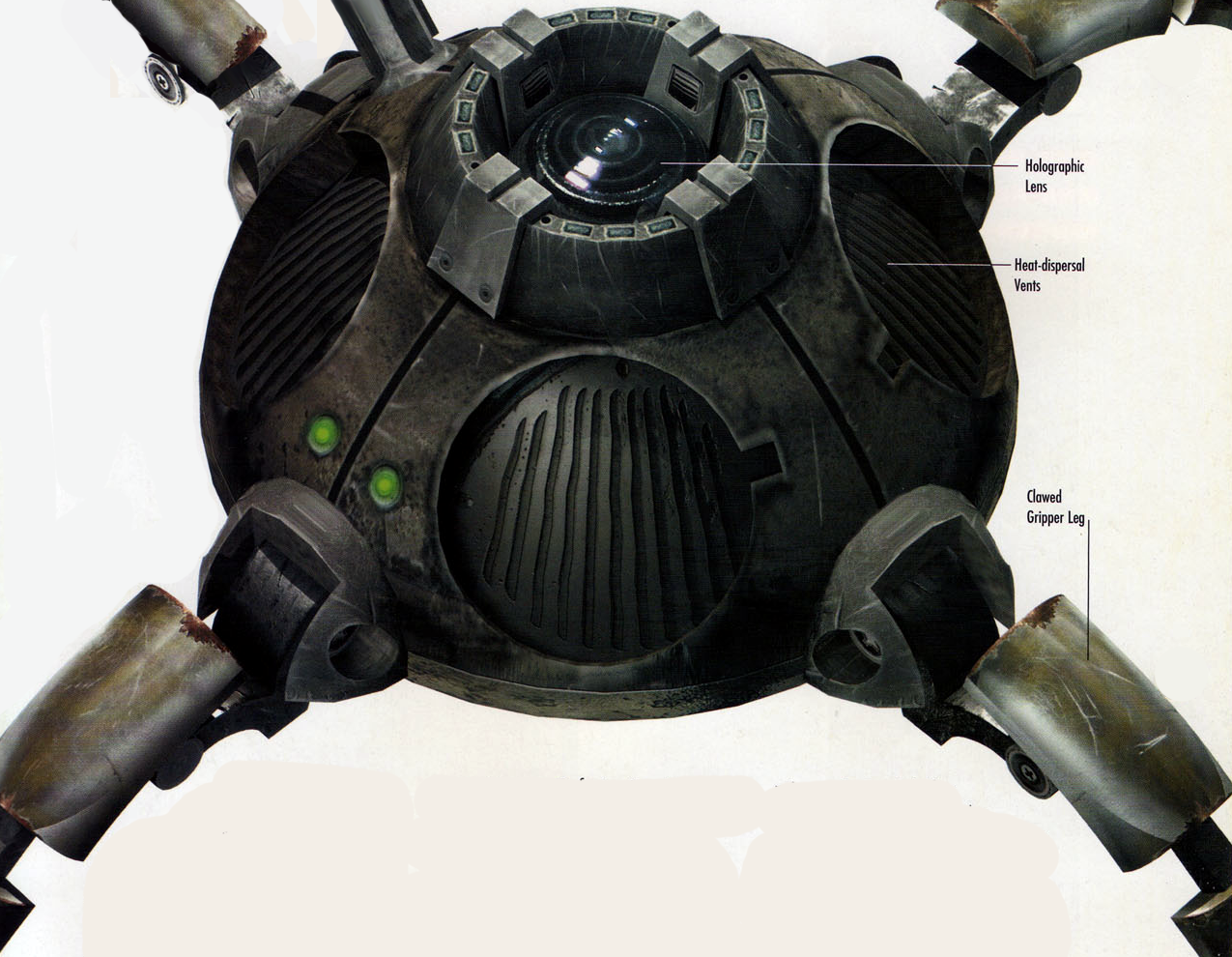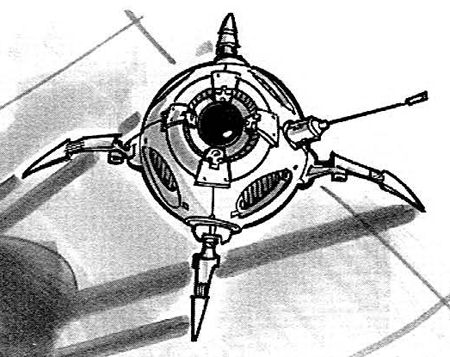
A close up of the top of the casing
It was only six centimeters wide and had a small circular body supported by four legs with magnetized tips for stability. Within its diminutive casing the fly eye contained a high-imaging holographic lens which could zoom in on tiny details, even small text on a document. However, due to its size restriction, the fly eye had no audio receptors.
The tiny droid could be remotely controlled by a joystick control pad from just over half a kilometer away although the droid had enough processing power to perform independent search patterns on its own. It immediately transmitted any visual data to its remote user via its tightbeam antenna. Though this left the droid vulnerable to transmission jamming. Once the user had positioned the fly eye, it entered a 'passive mode' in which the engine and all other unnecessary peripherals shut down, making the fly eye very difficult to detect, even with a security scan.
The fly eye owed its mobility to a tiny and surprisingly quiet repulsorlift engine situated on the underside of its body. This gave the droid a maximum speed of 10 km/h and allowed it to float up to 9 meters from the ground. However, during the testing process, the Loronar Corporation discovered that prolonged use of the engine often resulted in a circuitry meltdown. As a result, they installed 4 heat-dispersal vents positioned on the upper face of the droid which all but eliminated the issue.

Fly eye
Immensely popular with the undesirable aspects of society, such as paranoid crackpots, insatiable voyeurs and blackmailers, the fly eye also rose to popularity amongst news networks, though few would admit to using them. Due to privacy legislation, the fly eye was outlawed across hundreds of systems, however the small fines enforced did little to disuade more unscrupulous individuals and news journalists. When Tri-Nebula Entertainment revealed to the public that one of its fly eyes recorded Han Solo kidnapping Leia Organa in 8 ABY, public outrage at this violation of privacy soared to dangerous heights. Initially, more respectable news corporations such as Galaxy News Service refused to use the fly eye, however their rivals began to out-scoop them at every corner, and they were soon forced to follow suit.
Originally designed to succeed Cybot Galactica's AC1 Surveillance 'Spy Eye', the fly eye was a marvel of technological miniaturisation, and the Loronar Corporation was praised for their ingenuity. However this also came with a measure of scandal. Humiliated lovers, ruined politicians and newly divorced spouses all brought charges against the company for manufacturing a droid designed specifically for violating privacy. Unfortunately for the prosecutors, there had been a large number of legal precedents defending the use of espionage droids by government agencies and private citizens, and as such the charges were dropped.
Despite this controversy, the fly eye went on to become a big seller. In fact, in some cities, the fly eye became so popular, that they were declared an infestation. In these places, it was impossible to do anything without a camera trained on you, and this often resulted in long-lasting psychological issues.
The fly eye, or perhaps an earlier model, was around as early as the Clone Wars. Following the Battle of Rendili, Quinlan Vos sent a winged version of the fly eye to Khaleen Hentz, informing her that Count Dooku's plan to have Vos regain the trust of the Jedi High Council was working. This fly eye was fitted with a miniature holoprojector.